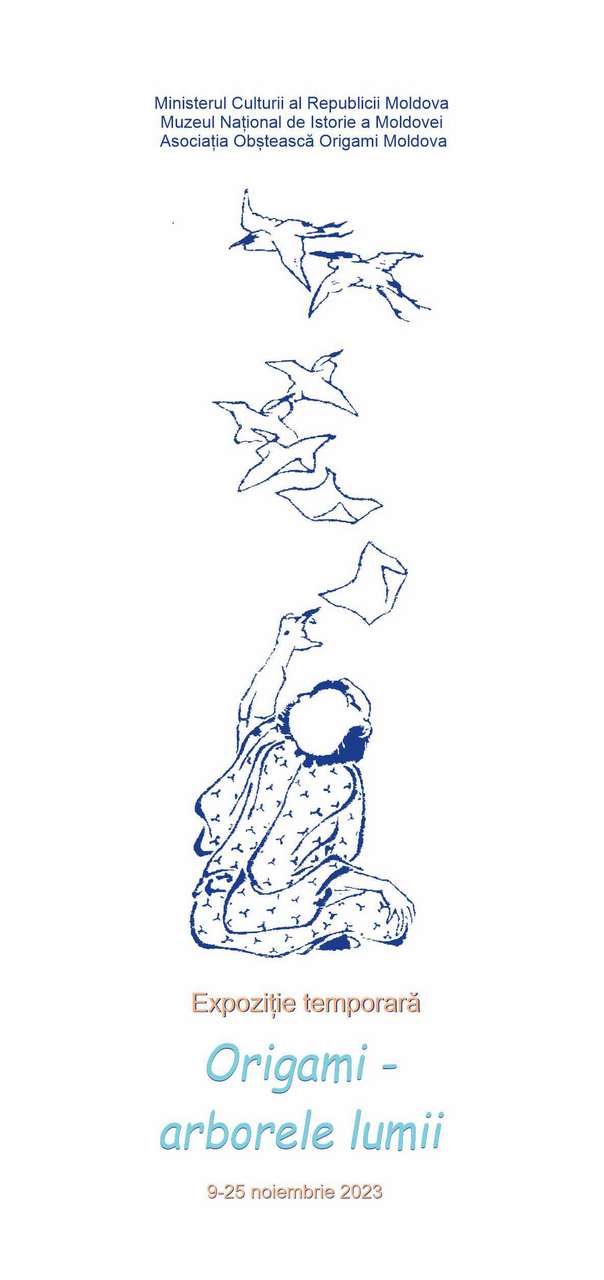
Every year, on November 11, World Origami Day is celebrated.
Although the origins are still not well known, it is assumed that the 6th century would be the starting point of the art of origami, first in Japan, then it was spread throughout the world, "landing" on European territory somewhere between the 17th and XVIII. It is a specifically Japanese technique of folding paper, which can take various forms, from models of living creatures and inanimate objects to geometric, abstract figures.
Nowadays, the art of origami is appreciated by people of all ages, representing a form of artistic manifestation, but also a passion, in which creativity, imagination and patience play a very important role. Moreover, it has become art, which is part of pedagogy, being practiced in kindergartens and schools during manual work hours.
The temporary exhibition "Origami - the world tree", dedicated to World Origami Day, presents a series of pieces made, in classic and modular style, by children and members of the Origami Moldova Association, divided into:
- "Momijigari" - a beautiful Japanese tradition, which literally means "maple leaf hunting". It is a centuries-old custom of the Japanese people to admire the changing colors of the leaves in autumn. The landscape, which becomes a work of art, inspires many artists, poets and ordinary people.
- Origami has no age limits. During its 26 years of activity, the Origami Moldova Association has gathered around it people of different ages. This section displays works by adult members for whom origami is art therapy.
- The Japanese system for the development of the child's intellect, developed by the neurobiologist Kikunori Shinohara, is the priority direction of the origami technique in Moldova. The exhibited pieces are made by children guided by Lilia Socolova, the president of the Origami Moldova Association, who uses this method in the training process. Since 1997, his students have participated in various republican and international exhibitions, obtaining diplomas and appreciations.
The opening of the exhibition "Origami - the world tree" took place on 9th of November, at 12:00. The exhibition is organized by the National History Museum of Moldova in partnership with the Origami Moldova Association and will be accessible to the general public from November 9 to 25, 2023, in the ground floor hall, National Museum of History of Moldova, Chisinau, 31 August 1989 street, 121A.











 31 August 1989 St., 121 A, MD 2012, Chisinau, Republic of Moldova
31 August 1989 St., 121 A, MD 2012, Chisinau, Republic of Moldova







































































